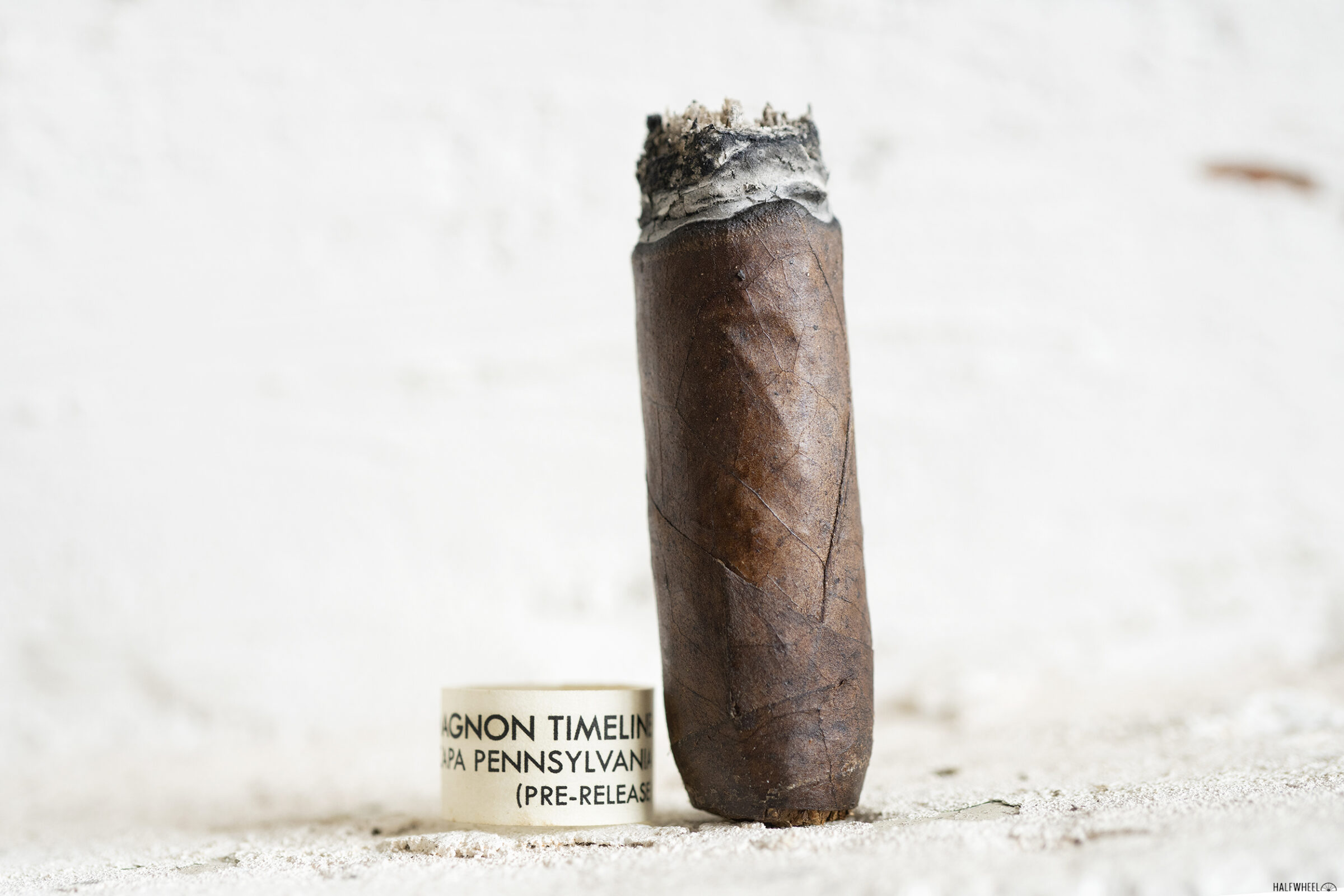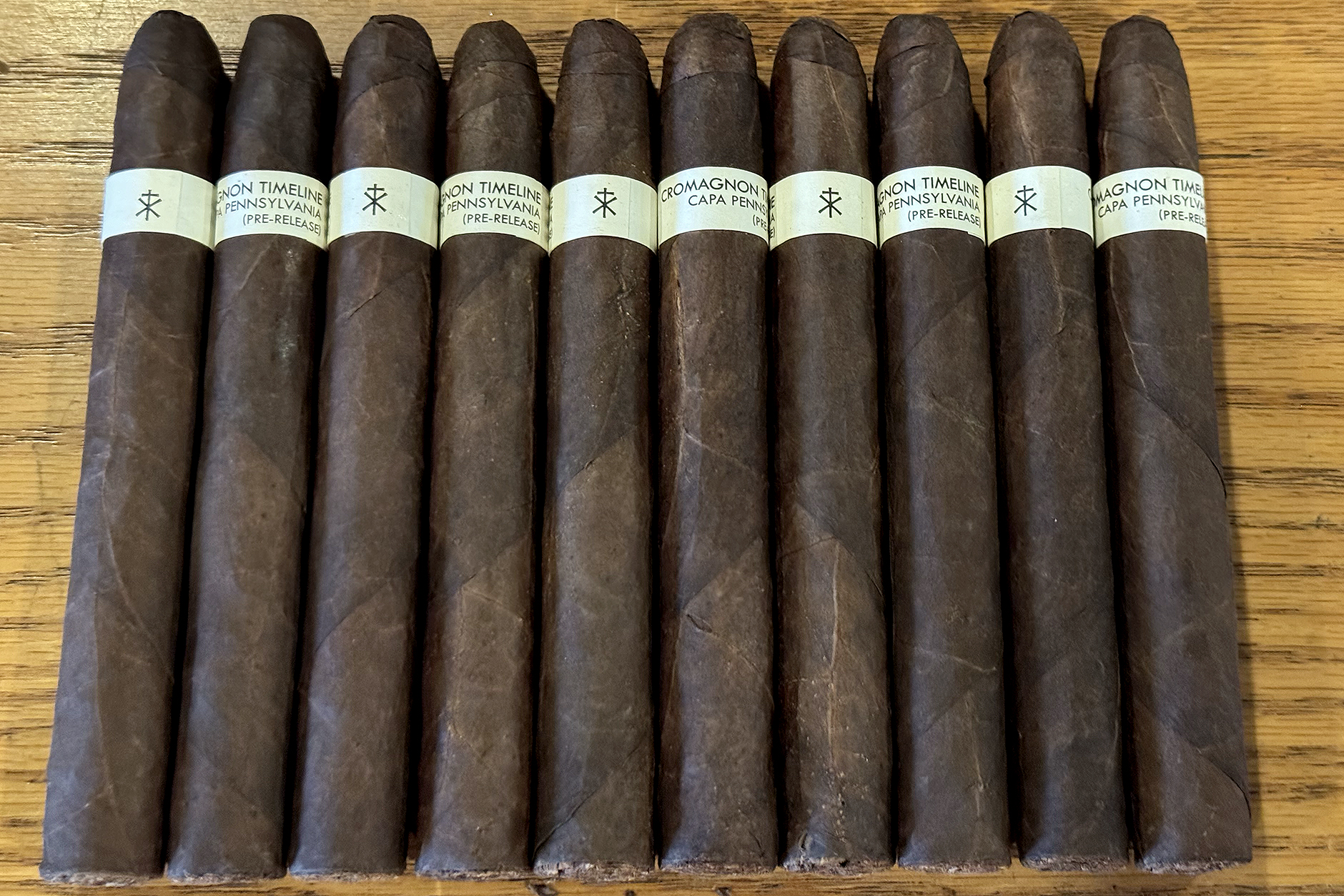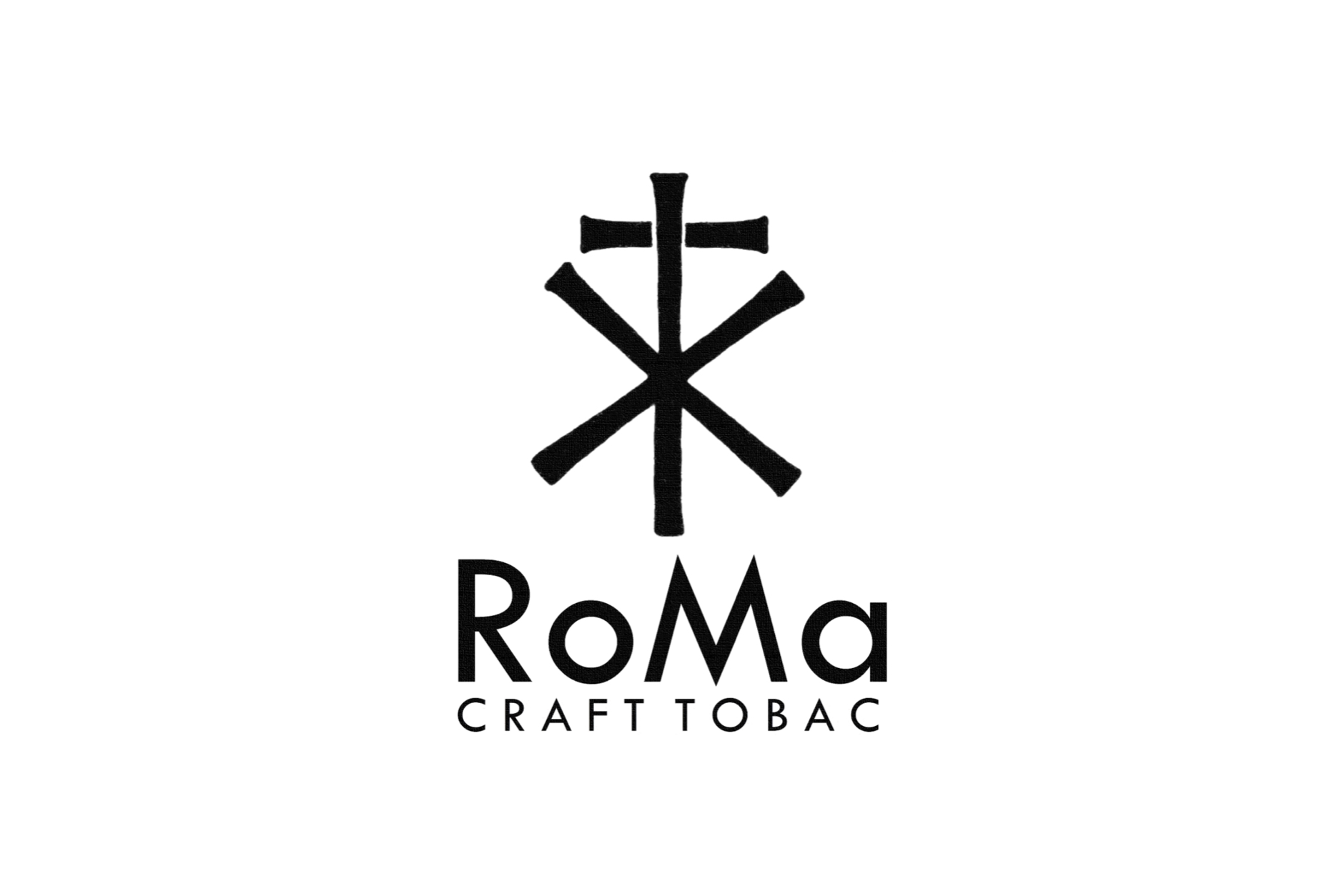In 2016, RoMa Craft Tobac celebrated its fifth anniversary by releasing a limited edition size in its CroMagnon blend called Timeline. While many of the limited cigars from RoMa Craft Tobac are available once per year or at select events, Timeline was a traditional one-and-done limited edition, at least until this year. However, the 2024 version of CroMagnon Timeline is not the same cigar as the 2016 version.
This one is a new blend. In fact, all of CroMagnon has a new blend.
In early 2023, RoMa Craft Tobac removed CroMagnon—the company’s first line—from its pricelist. The reason was simple: Fábrica de Tabacos Nica Sueño S.A., RoMa Craft’s factory, stopped rolling CroMagnon in mid-2022. The company was having increased issues getting enough high-quality Connecticut broadleaf wrapper to make CroMagnon. Skip Martin, co-founder of RoMa Craft, told halfwheel that the company would have needed to buy large quantities of Connecticut broadleaf and sort through it to find what it wanted to use. After the sorting was done, there would be an issue. Whereas most factories would have other blends that used this lower quality tobacco, RoMa Craft does not make other broadleaf blends. So it pivoted.
RoMa Craft developed a new CroMagnon blend, one that replaced the Connecticut broadleaf wrapper with Pennsylvania broadleaf. It wasn’t just the wrapper, the filler blend is now made up of both Dominican and Nicaraguan tobaccos; for context, the original CroMagnon blend didn’t contain any Dominican tobacco.
In March, the new CroMagnon blend shipped to stores in the Timeline size, a 6 1/4 x 50 toro extra that uses a 109-style cap, which is a hybrid between the traditional round cap of a robusto or toro and a pointed cap of a belicoso.
Shortly thereafter, the regular production sizes of the updated CroMagnon blend began shipping to stores:
- CroMagnon Pestera Muierilor (4 x 46) — $8.70 (Box of 30, $261)
- CroMagnon Knuckle Dragger (4 x 52) — $9.75 (Box of 24, $234)
- CroMagnon Mandible (4 1/2 x 60) — $10.25 (Box of 24, $246)
- CroMagnon Mode 5 (5 x 50) — $9.95 (Box of 24, $238.80)
- CroMagnon EMH (5 x 56) — $11.05 (Box of 24, $265.20)
- CroMagnon Anthropology (5 3/4 x 46) — $11.60 (Box of 24, $278.40)
- CroMagnon Cranium (6 x 54) — $12.40 (Box 24, $297.60)
There are another 10 limited CroMagnon vitolas listed on the RoMa Craft Tobac price list. These are sizes like Atlatl and Slobberknocker that were released in the old CroMagnon blend as limited items. The plan is for those cigars to return at a later date. The next new CroMagnon will be Clovis, a new version of the CroMagnon Black Irish. Last I heard, Clovis should be shipping to stores in the next week or so.
- Cigar Reviewed: CroMagnon Timeline (2024)
- Country of Origin: Nicaragua
- Factory: Fábrica de Tabacos Nica Sueño S.A.
- Wrapper: U.S.A. (Pennsylvania Broadleaf)
- Binder: Ecuador (Sumatra Hybrid)
- Filler: Dominican Republic & Nicaragua
- Length: 6 1/4 Inches
- Ring Gauge: 50
- Vitola: Toro Extra
- MSRP: $13.50 (Bundle of 10, $134.99)
- Release Date: March 7, 2024
- Number of Cigars Released: 500 Bundles of 10 Cigars (5,000 Total Cigars)
- Number of Cigars Smoked For Review: 3
The cigars look rough. Broadleaf itself tends to be rough to both the eye and touch, but these are extra rough. It’s not just the wrapper leaf, the rolls of the cigar themselves aren’t the prettiest. One cigar is noticeably rougher with a sloppily-applied cap, multiple patches and some gnarly vein structure. I don’t believe that a “good cigar” needs to look good, so I’m not too concerned. That said, both Brooks and I were taken aback by how these cigars looked. I’m also surprised by the mild wrapper aroma. Two cigars have some soft barnyard and a hint of coffee, but the third cigar doesn’t really have any smell. That said, I find a full aroma from the foot of each cigar: fudge dominating some wood, barnyard, generic sandwich bread and/or some watermelon. Cold draws continue the trend of two cigars being similar and one being a bit different. The two similar cigars are led by cocoa, woods and earthiness over some subtle spices, red apple and something that reminds me a bit of root beer. The third cigar tastes like an aged CroMagnon: a muted mixture of barnyard and earthiness over pepper and raisin sweetness. I find that third cigar to medium-full with heavy flavors that present themselves in a fragrant manner.
Woodiness—one cigar has a more distinct burnt hickory smell—leather, barnyard, minerals and creaminess are the initial flavors. I’m not sure if it’s the vitola or the blend, but I’m surprised by the more medium body. As I get into the first third, I find some signs of CroMagnon, but I don’t recall the old blend being this earth-forward. Earth is the strongest flavor with dry fall leaves, woodiness and some red pepper behind it. While the earth is the star of the show, the flavor profile is very intertwined. During the finish, there’s a toastiness that changes the complexion of the earthiness. Secondary notes include spiciness, cinnamon and white pepper. Retrohales have some butter-like creaminess before sawdust and earthiness take over. It finishes with lots of cinnamon, pepper and earthiness, but there’s also some cola-like sweetness underneath. Flavor is full, body is medium or medium-plus, and strength is medium-plus, though not too far away from medium-full. The first cigar I smoke has a pretty tight draw during the first third, though in true RoMa Craft fashion, there’s plenty of smoke from the cigar. Outside of that tight draw, I have no construction complaints for the first third.
While the first third of the new CroMagnon Timeline was dominated by earthiness, the second third brings a different type of earthiness. There’s much more of the terroir flavor—one that I would describe as reminding me of the smell of soil in various states—along with minerals. As with the first third, the flavors tend to be intertwined, which means, at times, it tastes like it’s earthiness mixed with toastiness, herbs, some wheat crackers, bitter coffee and barnyard flavors. Pepper is consistently part of the profile, though it ebbs and flows in intensity and changes how it interacts with my palate. The finish has earthiness and an added tastiness over leather, white pepper and some of the wheat cracker flavor from before. Retrohaling breaks up the earthiness’ dominance by introducing fruitiness and some pasta flavors. There’s still earthiness, though I find it to be a more savory flavor than before. That said, there are some puffs that produce a more intense version of the terroir sensation. Other than some added sharpness, it’s tough to pick up the difference between a finish with and without retrohaling. Flavor is full, body is medium-full and strength starts medium-plus but finishes solidly medium-full. Each cigar needs at least one touch-up in the second third, sometimes for smoke production, other times for combustion.
The smoke production has decreased, and I think that for two cigars, it’s affecting the flavor. There’s a lot more toastiness, and it’s a gruff kind that I typically find when a cigar has at least one type of combustion issue. It’s also possible that the larger issue is that outside of the toastiness, there’s just not many other flavors when the smoke hits the mouth. Earthiness remains, though without a lot of the nuance of the earlier parts, and barnyard and spiciness have been reduced. The third cigar bucks the trend and delivers the most complex array of earth-like sensations at any point of any of the three cigars. That cigar also has the toastiness increase and the spiciness reduce, but the earthiness is able to shine. The finish has a similar list of flavors as before—earthiness, toastiness, white pepper, crackers—but the pepper is reduced. On the third cigar—the one with the better earthiness—there’s a flavor that makes me imagine what toasted Ritz crackers would taste like, joined by the earthiness and pepper. Retrohales are quite different as grains serve as the base with accents of sesame seeds and some simple syrup-like sweetness. Flavor is full, body is medium-full and strength is now very clearly full. Two cigars need touch-ups in the final third. If you guessed that the third cigar was the one that didn’t, you would be correct.
Final Notes
- Based largely on the cigars I’ve smoked over the years and a lesser degree on my limited time spent smoking the tobaccos by themselves, I’m someone who generally prefers Connecticut broadleaf over Pennsylvania broadleaf. A large part of that is that there are far more cigars with Connecticut broadleaf wrappers than Pennsylvania broadleaf.
- If you told me these cigars were being marketed as farm rolls or something else that suggested the rustic appearance was intentional, I wouldn’t bat an eye. These cigars arrived with all sorts of visual imperfections, some of which I typically do not see on cigars. While the large line on the left looks like a cut, it’s actually more like a wrinkle or a fold. You can see a smaller area towards the bottom of the cigar on the right.
- You can see another example here. This is not a case where the darkness of the wrapper hides these issues. They are very apparent to the naked eye.
- As ugly as these cigars were, they smoked quite well. Outside of the draw issue in one third and a few touch-ups, the cigars had great construction. As much as I felt like the size held things back, I never thought that the way the cigars were bunched or rolled negatively impacted how they performed.
- Especially with the first two cigars I smoked, I felt like the unique shape was causing issues. It’s not so much a draw issue as it is a mouthfeel issue, I just felt like the smoke density should be different. It was especially apparent in the body of the cigar, which was consistently lacking. Not just compared to old CroMagnon, but also compared to the flavor profile and strength.
- Each and every time I am smoking a cigar with a 109-style cap and have frustration, I wonder whether I like the 109-style cap. For me, it’s not as simple as saying this cigar’s smoke leaves the cigar the same way as a belicoso. It’s different and I am beginning to wonder if I’d prefer to not smoke the 109-style cap. That said, I do like the unique shape.
- I really appreciated how candid Skip Martin was about why this change was required. Sure, it makes RoMa Craft look good by saying “we aren’t going to knowingly pass off inferior products just to keep saying we didn’t change the blend,” but few brand owners would ever explain why a drastic change like this was needed.
- These cigars are listed at 6 1/4 x 50.
- Cigars for this review were purchased by halfwheel.
- Final smoking time varied wildly. The quickest cigar took just over two hours to smoke, one cigar took nearly three hours to smoke.
I am not going to pretend that I know how much of a difference the wrapper change made. Even if I smoked the new internal blend with the old wrapper side-by-side with an old cigar, I still wouldn’t make this statement because I suspect there are a few things that all combine to make a difference. First, the wrapper changed. Second, the internal blend changed. Finally, if I were to smoke an original CroMagnon blend versus CroMagnon PA, it would be smoking an aged cigar versus one that has recently shipped to stores. That said, this is a review and you would probably like to know how this compares to the old CroMagnon. Based on the extremely limited sample size of three cigars, I had better experiences with the old blend. More specifically, if this 2024 version of Timeline is the bar, I had more CroMagnons that were better than this line than were worse. Less than halfway through smoking my first CroMagnon Timeline, I wrote in my notes that I felt like the shape was negatively impacting the flavor. The flavor just felt like it was being held back 10-20 percent. Hopefully, the missing heaviness is a result of the quirky shape and not the blend, but, given that I've yet to smoke any of the other sizes, I cannot tell you the answer to that just yet.









